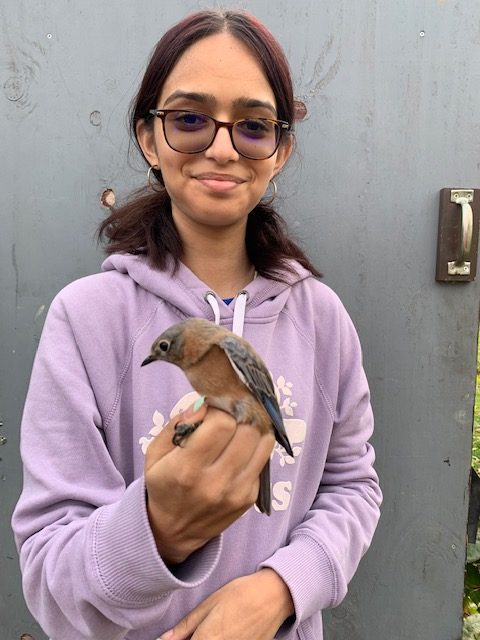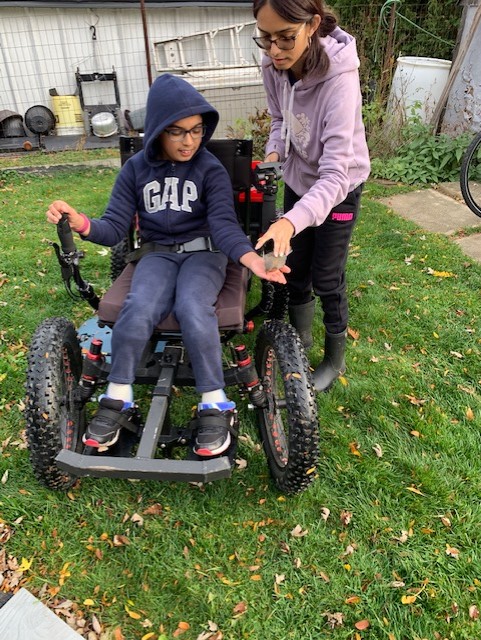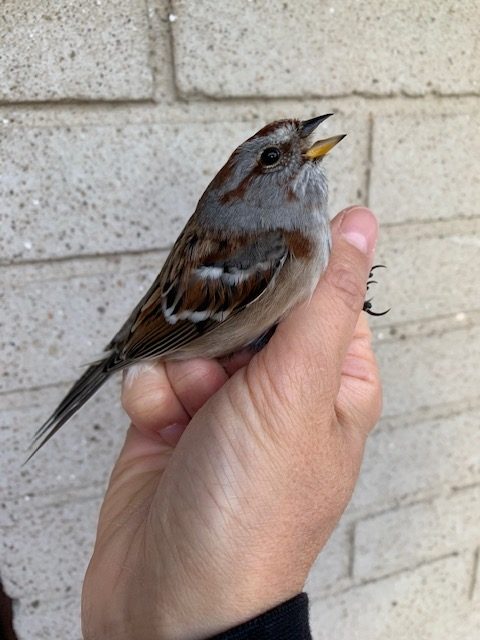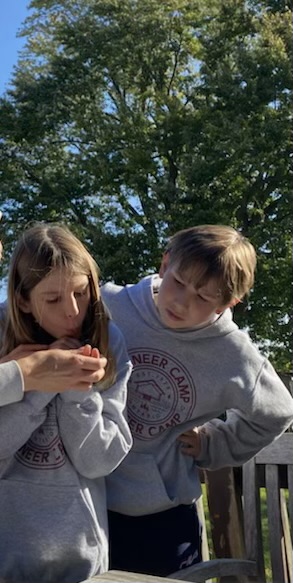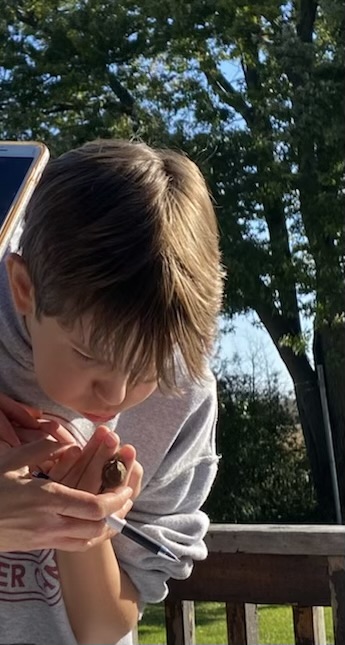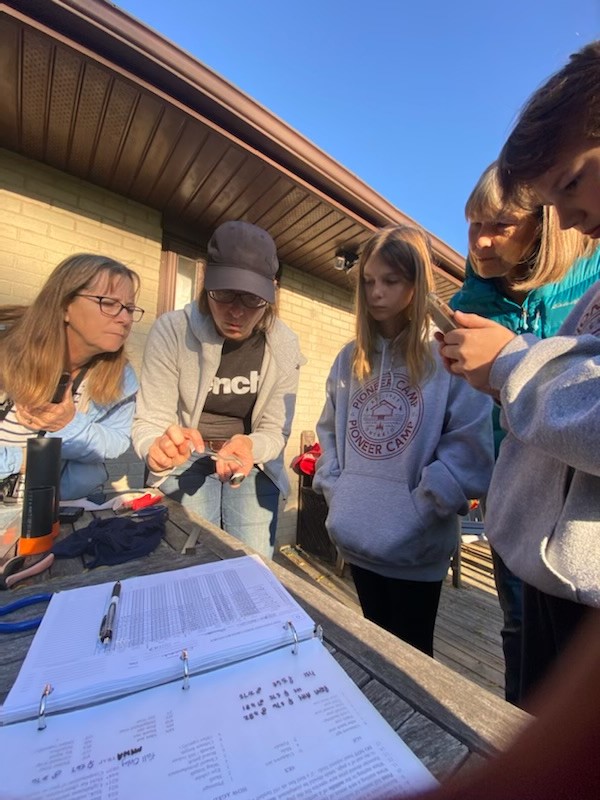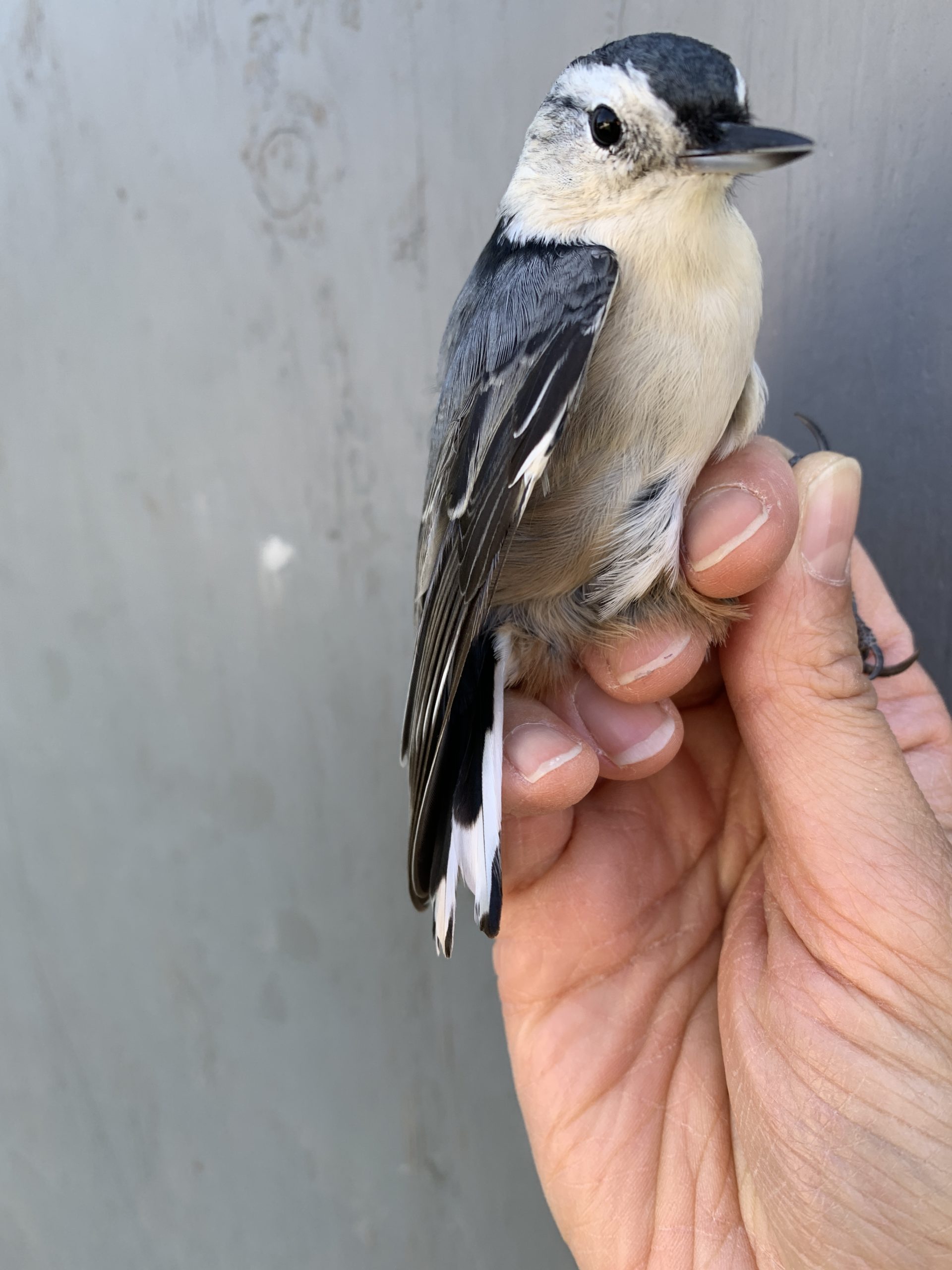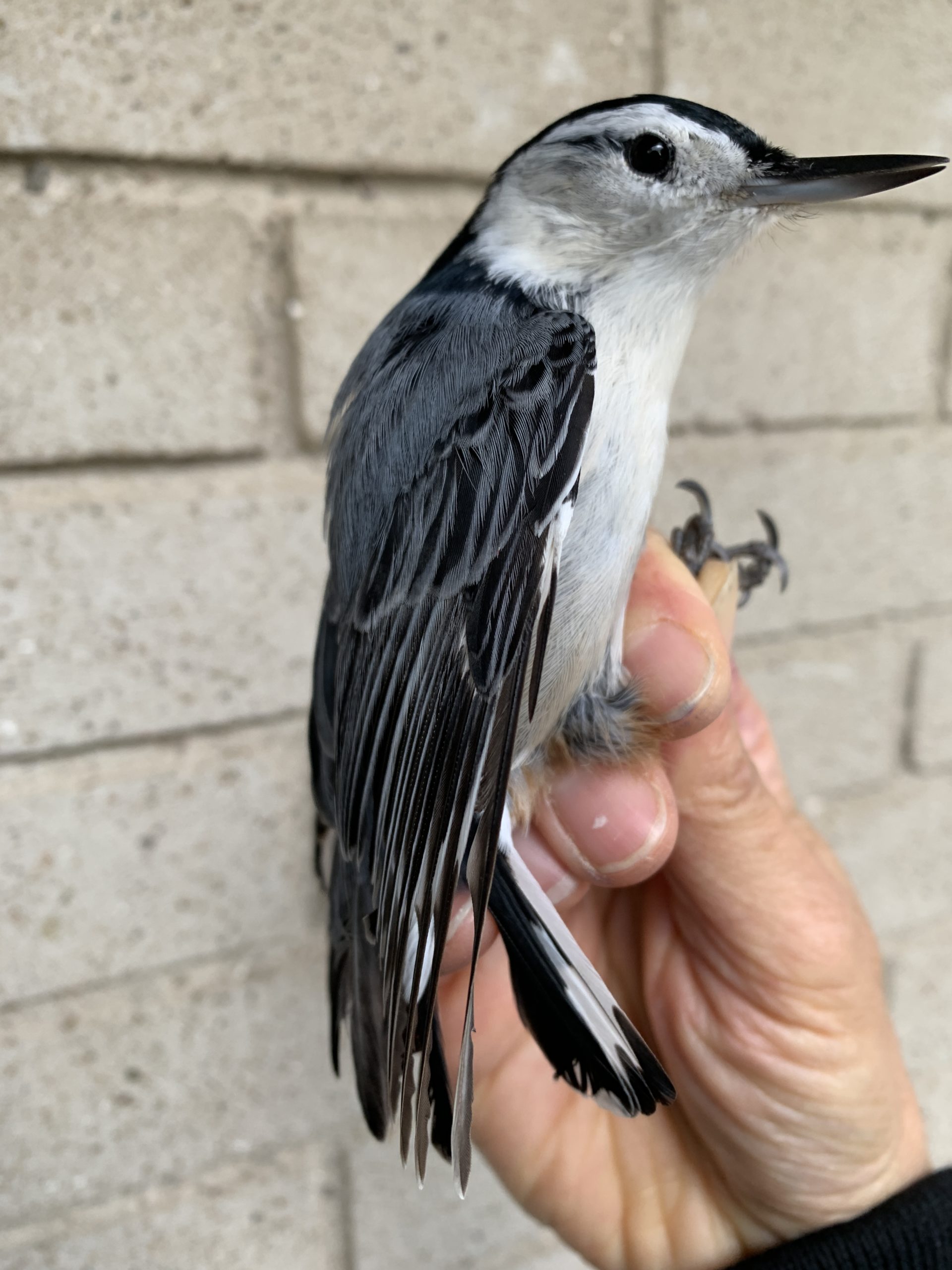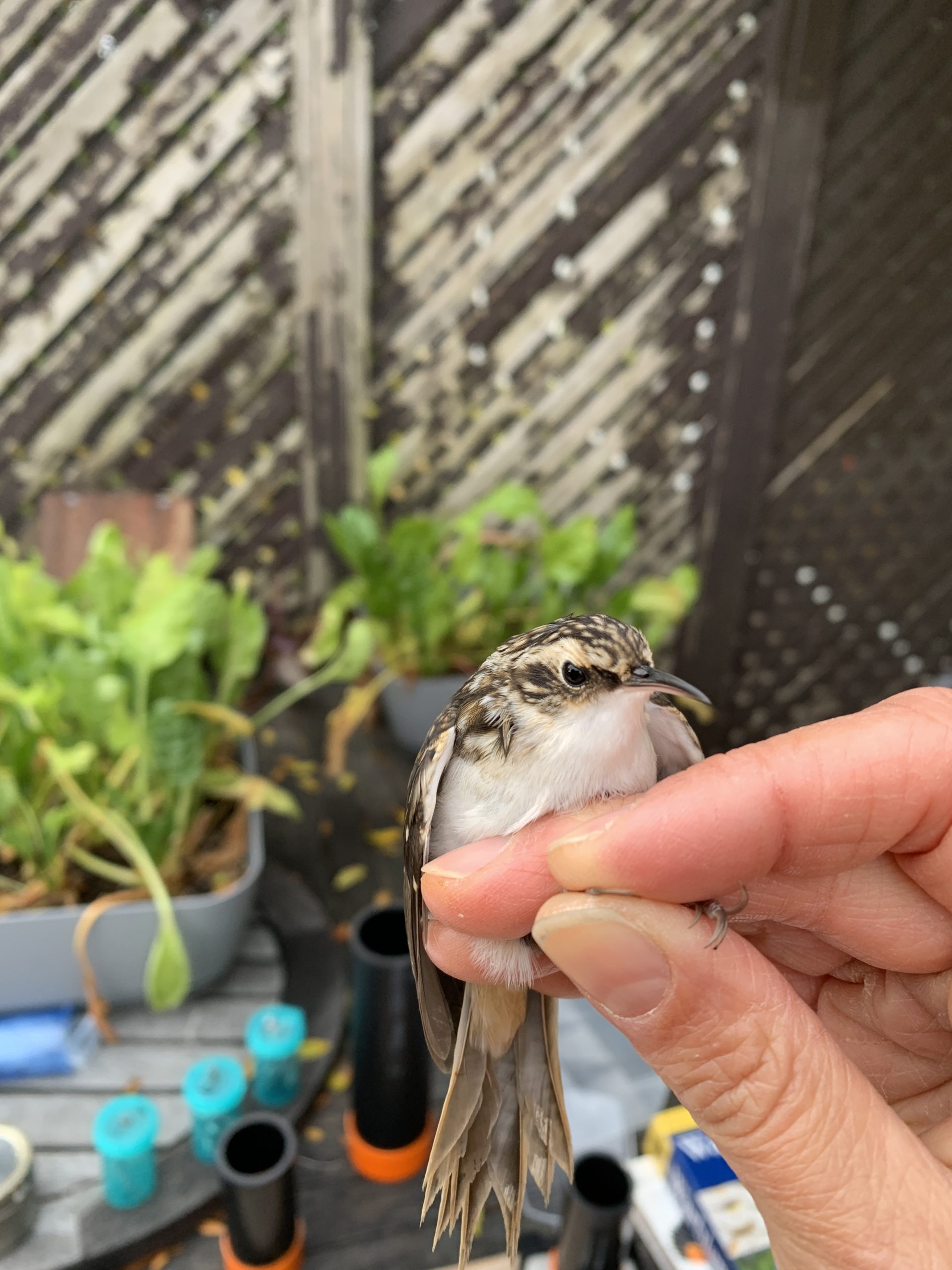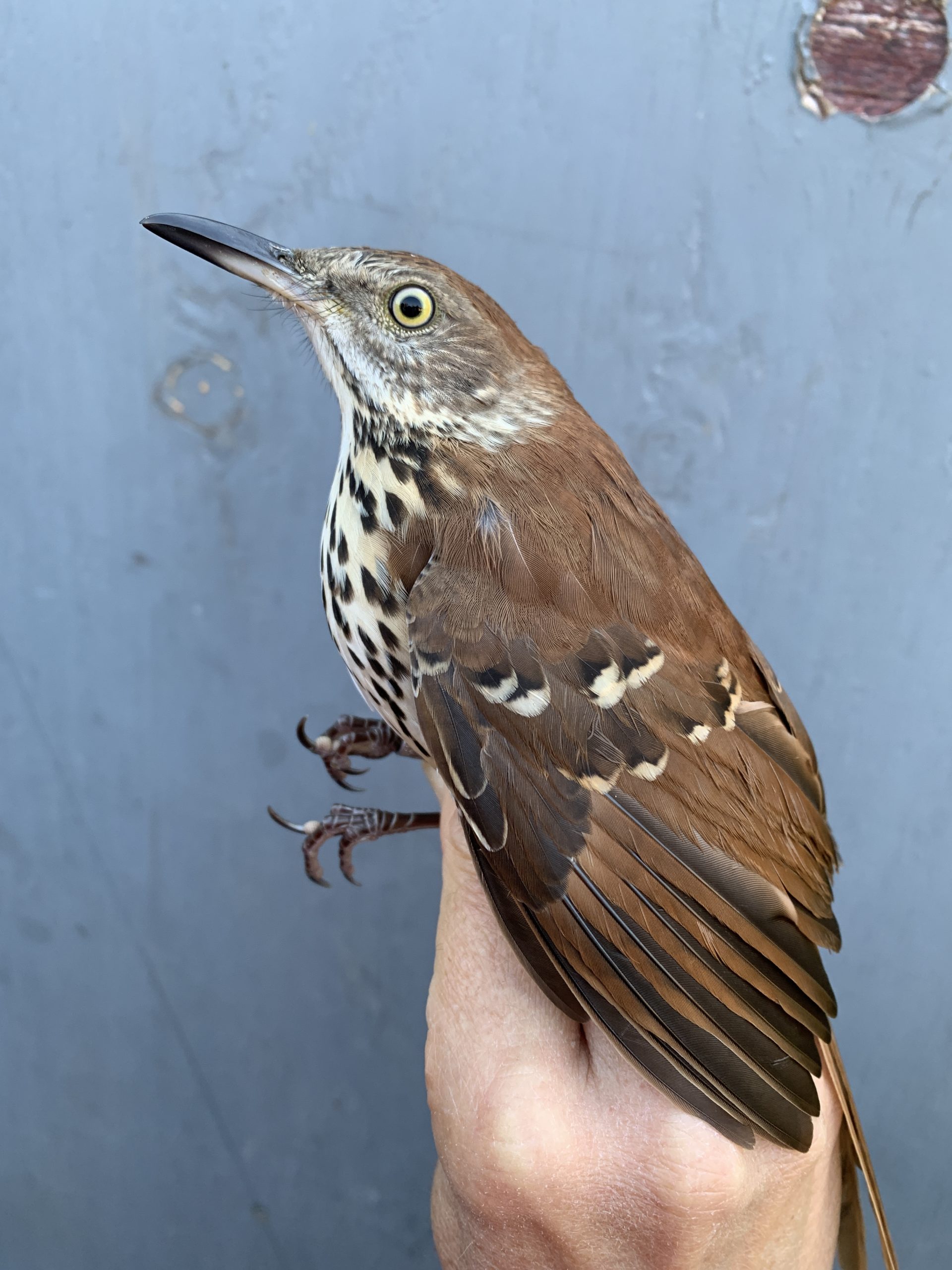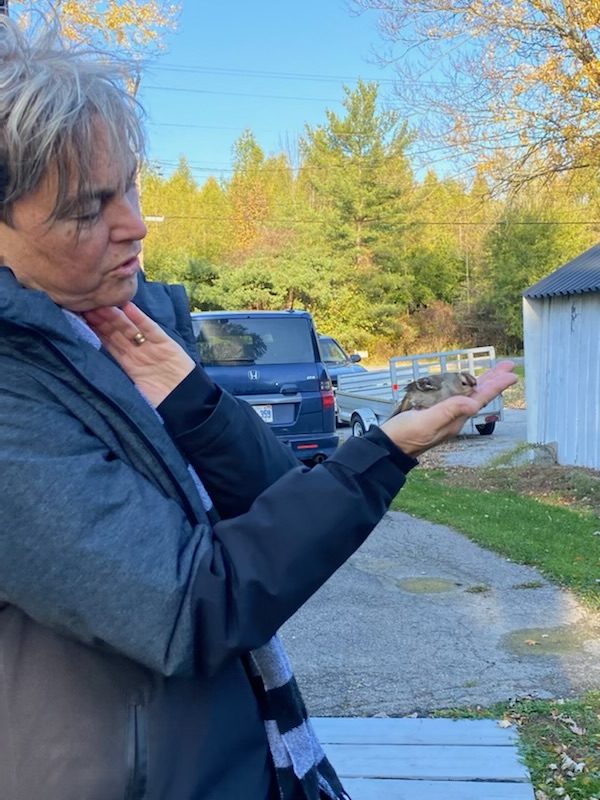Continuing with Rick’s previous post, I am so glad he forgot (he is getting up in years 😉) to add my neighbours to the list of landowners who are also donating the use of their land to our use, because I would love to be able to do that personally. The Hornsvelds have been incredibly generous and supportive in allowing me to use their land. They help to set up nets, move nets, take down nets, they walk their property and suggest new areas to try as net lanes, always say yes when Liam finds a new spot he thinks will be simply great and they help to maintain the net lanes by keeping the grass cut around them. As a 1 person show, it is a lot to run and maintain an area and their help has been invaluable. As they transition to a new house on their existing property, the surprising number and variety of birds we have caught in what seemed insignificant hedgerows has convinced them to leave these intact as areas for the birds. Furthermore, their plans to increase the diversity of native species through planting more trees and shrubs, by leaving meadow grasses in place and working to rid the wetland area of the nasty invasive phragmites to get some open water has me really excited to see what will happen to this area over the next few years. I bet the pair of Great Horned Owls, who were calling this evening from somewhere near the beehives, would agree with me.
Summary for Glancaster
Like Marnie, I am currently constrained by the demands of work and I am also working against the ever-decreasing amount of sunlight that comes with fall. As a result I was only able to open nets 17 days this fall. In the spring I can usually get in a couple of hours before school, but there just is not enough sunlight in the mornings to do this in the fall. I did attempt to open a couple of afternoons, but it was not met with remarkable success. I had total net hours of just less than 400 and my total birds banded this fall was 308. While I am an inland station, without access to water, my top ten birds banded were fairly similar to what was caught at the farm site:
Slate-coloured Junco – 38
Myrtle Warbler – 32
Black-capped Chickadee – 29
White-throated Sparrow – 26
Ruby-crowned Kinglet – 20
American Goldfinch – 19
Song Sparrow – 15
Common Yellowthroat – 12
Northern Cardinal – 11
House Finch – 10
One of the driving ambitions behind HBO is the idea of bringing people into close encounters with birds, thereby inspiring them to begin their own journey with birds. I have been volunteering with HBO for about 16 years now and have really enjoyed watching the fascination and wonder so many people have when they are first introduced to a bird in hand. I am so glad I have been able to continue doing this at my site; this fall I had almost 25 human visitors.
I am also enjoying sharing pictures and stories with the new group of twenty-one 5 and 6 year olds in my class this year. TVO has some online learning resources we use sometimes, and I was delighted to see a couple of Grade 1 Science modules were specific to birds and even included information about Snow Buntings for Grade 1! I may have to see if I can find a site for Snow Buntings close to home this winter so I can tie them into some of my lessons. If you would like to check out the resource, you can access it by clicking here.

